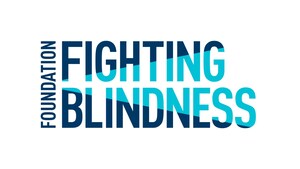Foundation Fighting Blindness Endorses 'Eye Bonds' Legislation
Bipartisan Bill Will Stimulate Up to $1 Billion in New Funding for Blindness Research
COLUMBIA, Md., May 9, 2019 /PRNewswire/ -- The Foundation Fighting Blindness today announced its support for bipartisan legislation to fund treatments and cures for blindness and other forms of severe vision impairment. H.R. 2620, the Faster Treatments and Cures for Eye Diseases Act, introduced today by Reps. Sanford Bishop (D-GA) and Cathy McMorris Rodgers (R-WA), would create a five-year pilot program for the creation of Eye Bonds – financial instruments to raise money for research specifically related to a broad range of eye diseases and conditions.
"On behalf of the entire blind and vision impaired community, we are grateful for the actions by these members of Congress and urge others to join as co-sponsors of this important legislation. There is no doubt that vision-saving and vision-restoring research sitting on shelves needs to be unleashed so patients can benefit. We are confident that Eye Bonds will work," says Benjamin Yerxa, PhD, chief executive officer at the Foundation. "We especially want to thank Karen and Basil Petrou, longtime Foundation leaders, for developing the Eye Bonds concept and the financial details that make the legislation so beneficial and safe for taxpayers."
Eye Bonds would spur private-sector investment in translational research and advance treatments and cures for blindness and other causes of severe vision impairment. If approved by Congress, the new bonds would finance packages of loans that would total $1 billion for new projects over five years of the pilot program. Underwriters would determine how many projects they would fund and at what amount, not to exceed $250 million in any year. The National Eye Institute (NEI), part of the National Institutes of Health, would evaluate programs eligible for funding, although NEI would have no risk related to funding these projects.
Eye Bonds would NOT replace existing federal funding to the NEI.
Eye Bonds may be purchased by pension funds, insurance companies, and other institutional investors. The money generated will then be lent to scientific projects recommended by the NEI. When the bond matures, or comes due, the scientific project will have reached a stage of development that it will have commercial value or be eligible for other funding, enabling the loan recipient to repay the Eye Bond. Eye Bonds will be backed by a limited federal guarantee to provide the security needed for pension funds and other private investors to purchase them.
This legislation holds enormous promise for saving and restoring the vision of the 4 million adults and almost half-a-million children in the U.S. who are blind or have severely impaired vision from a variety of eye diseases and conditions, including age-related macular degeneration, diabetic retinopathy, and sickle-cell retinopathy. Furthermore, Eye Bonds would advance treatments and cures for diseases and conditions that affect the entire eye, including the severe vision trauma suffered by veterans of wars in Iraq and Afghanistan.
Eye Bonds fill a critical need, because many promising therapies never make it through the translational research process — out of labs and into clinical trials — because of a lack of funding; translational research is often referred to as "crossing the Valley of Death" for this reason. Pharmaceutical companies and biotechs are less likely to fund translational research. They prefer to fund projects once they have had some initial success in a clinical trial. This is even more the case with rare diseases or conditions without a proven regulatory pathway or demonstrated commercial success. Eye bonds would fund this vital research at minimal risk to the taxpayer, who would be the first to be repaid when private investors recoup their investments.
The Foundation believes these innovative research bonds will prove successful and the concept could be used to overcome obstacles that also exist in translating cancer, Alzheimer's, Parkinson's and other disease research into practical use.
The Foundation Fighting Blindness has been an unparalleled leader in supporting research on inherited retinal diseases for more than 48 years. It is currently funding 75 research studies at prominent laboratories worldwide and on the spectrum of emerging retinal disease therapies including gene, cell and drug-based treatments.
ABOUT FOUNDATION FIGHTING BLINDNESS
The Foundation Fighting Blindness was established in 1971. It has since raised more than $750 million for research aimed at preventing, treating and curing blindness caused by retinal degenerative diseases. In excess of 10 million Americans, and millions more worldwide, have experienced or are at risk of experiencing vision loss due to retinal degeneration. Through its support of focused and innovative science, the Foundation drives the research that has and will continue to improve the lives of people affected by retinitis pigmentosa, macular degeneration, Usher syndrome and other inherited retinal diseases. The Foundation has launched a global patient registry, www.MyRetinaTracker.org, to build knowledge of retinal diseases and advance clinical research. Visit www.FightBlindness.org for the latest information on retinal disease research. Follow the Foundation on Facebook and Twitter.
Contact:
Ben Shaberman
[email protected]
410-499-9158
SOURCE Foundation Fighting Blindness

Related Links
WANT YOUR COMPANY'S NEWS FEATURED ON PRNEWSWIRE.COM?
Newsrooms &
Influencers
Digital Media
Outlets
Journalists
Opted In






Share this article